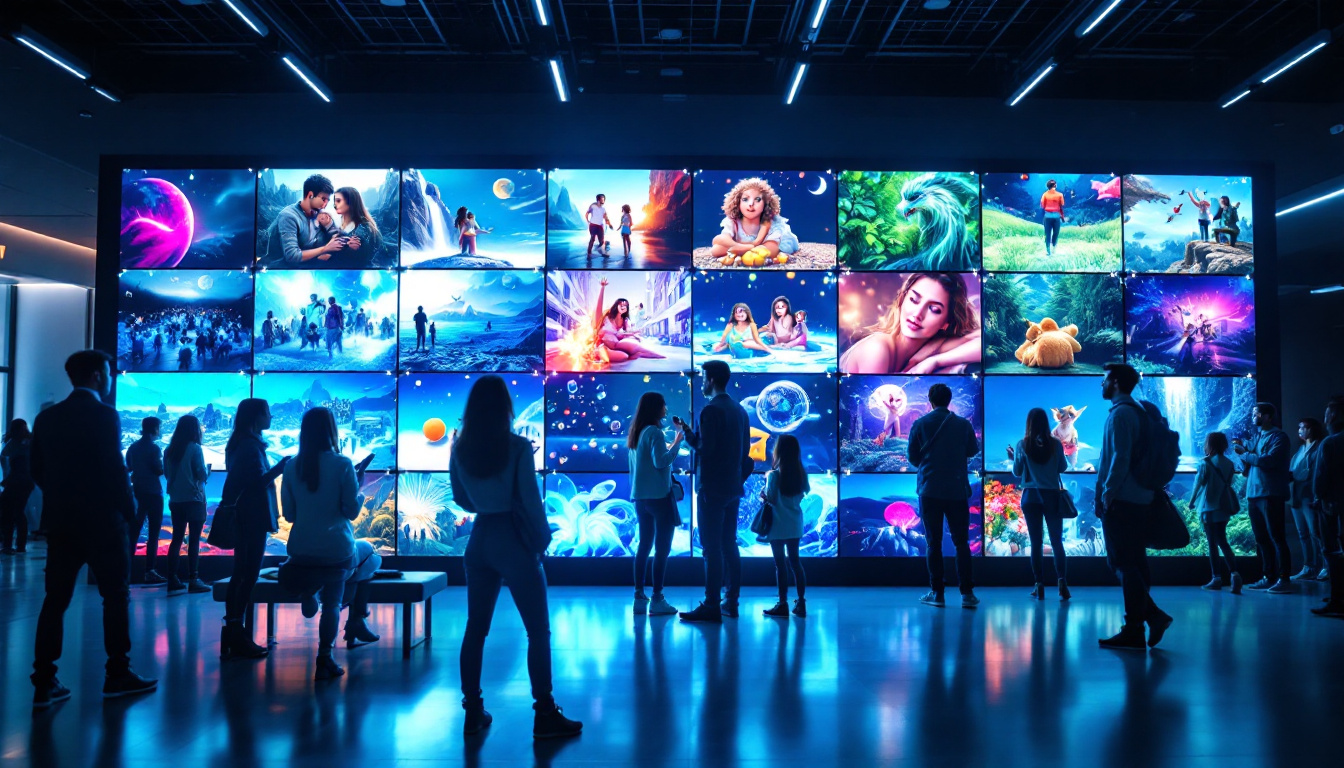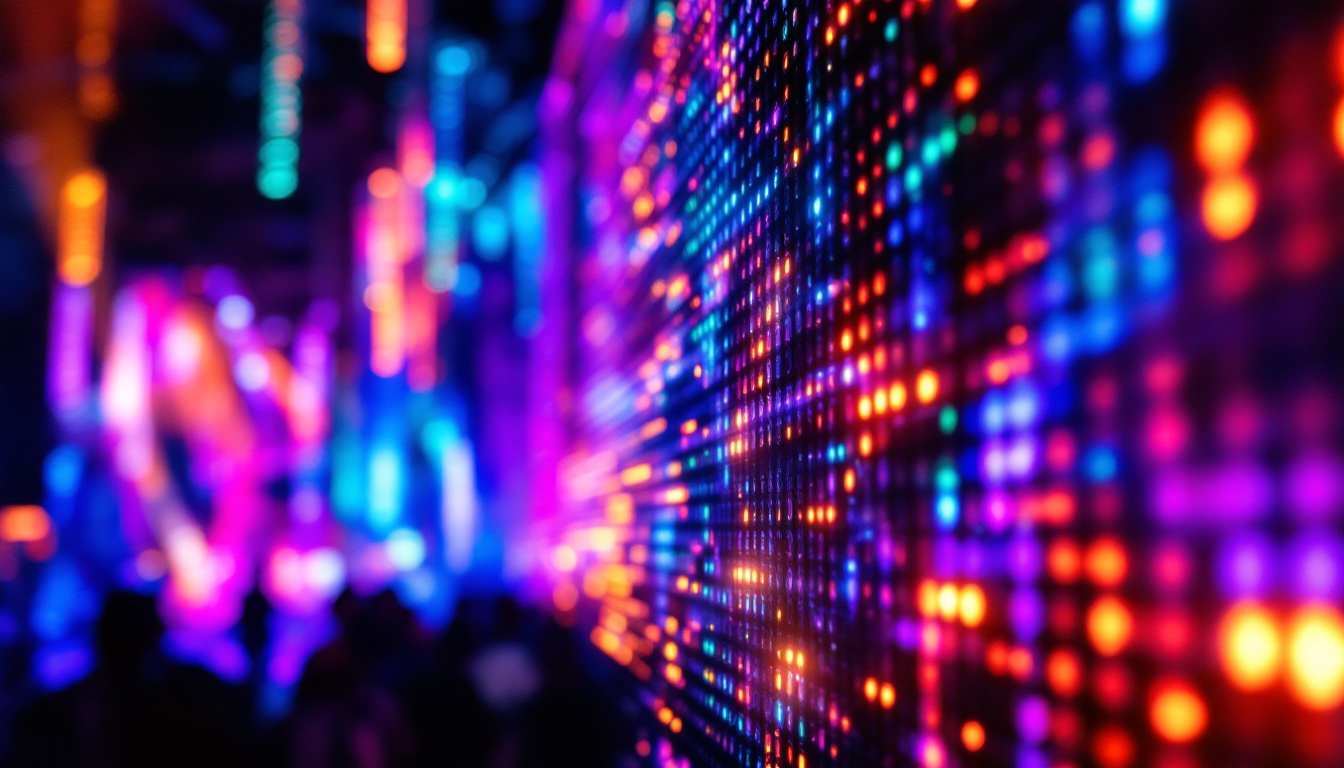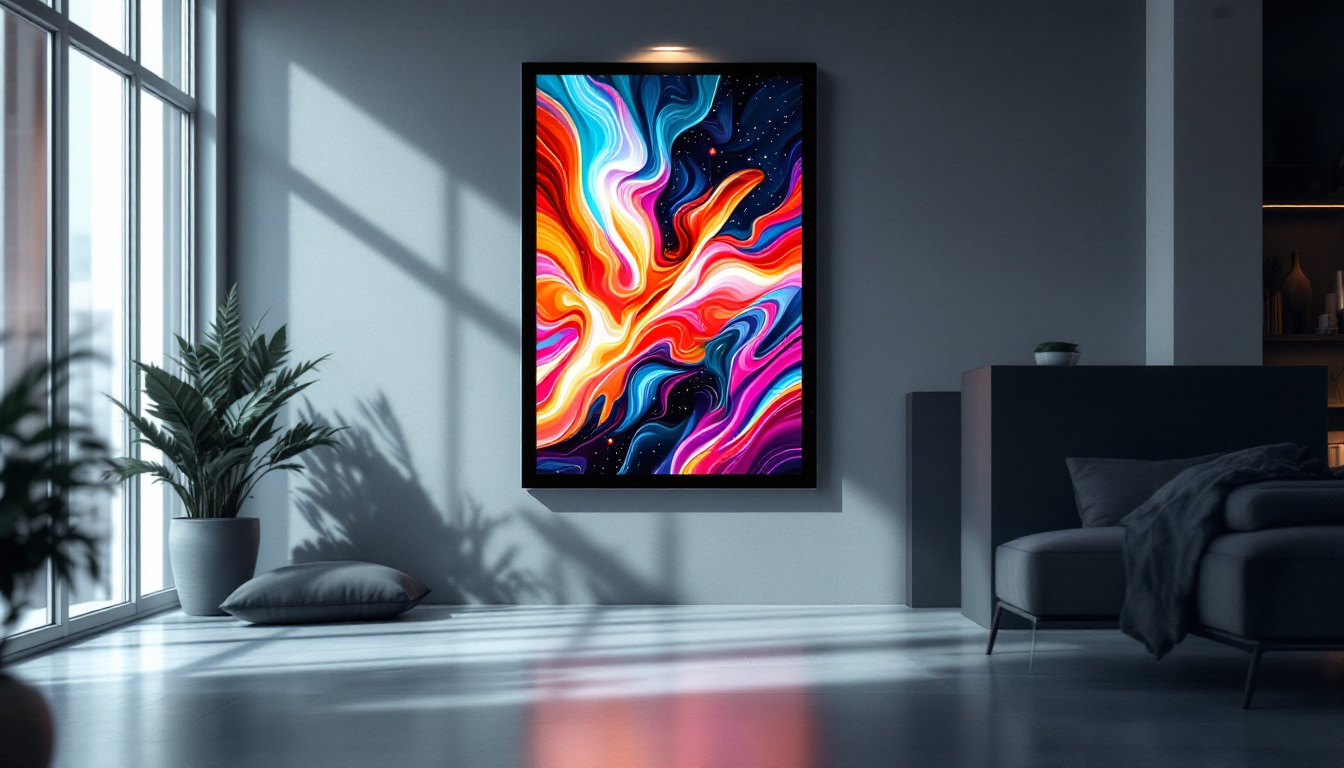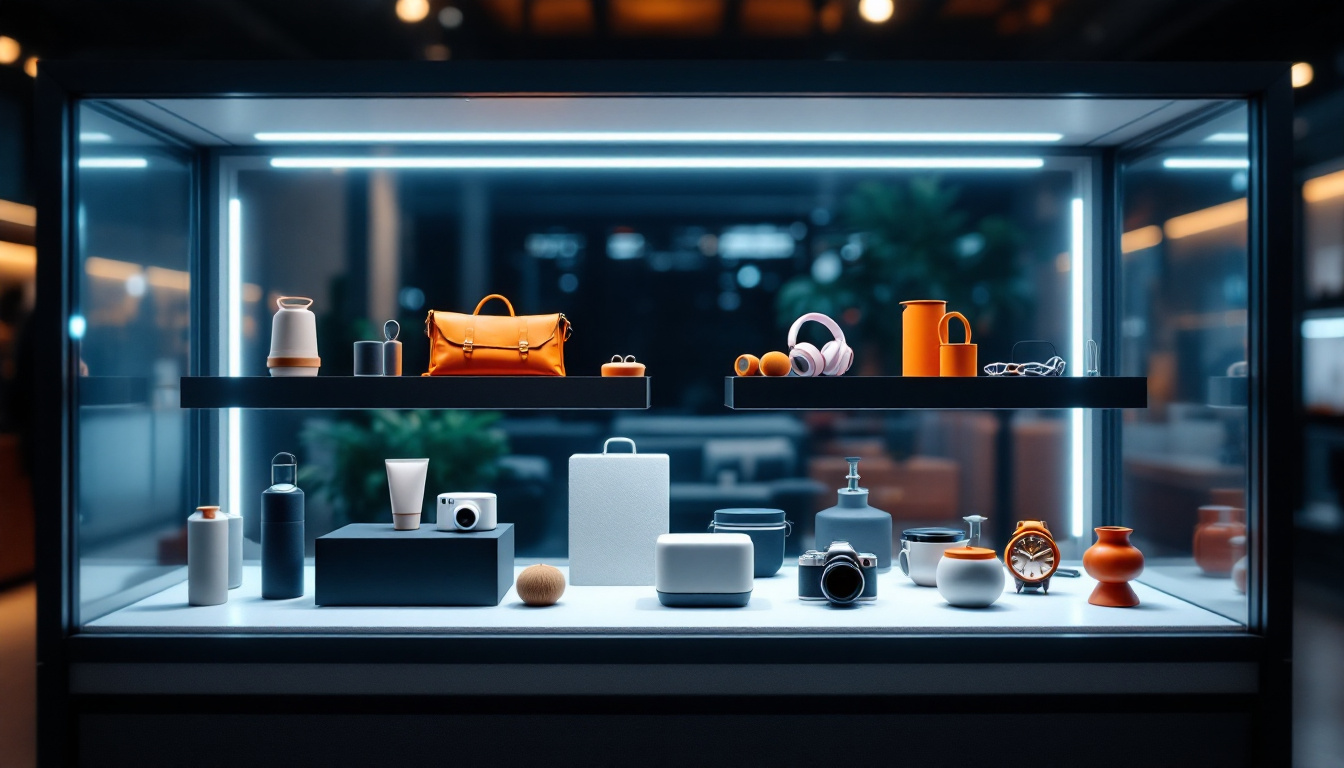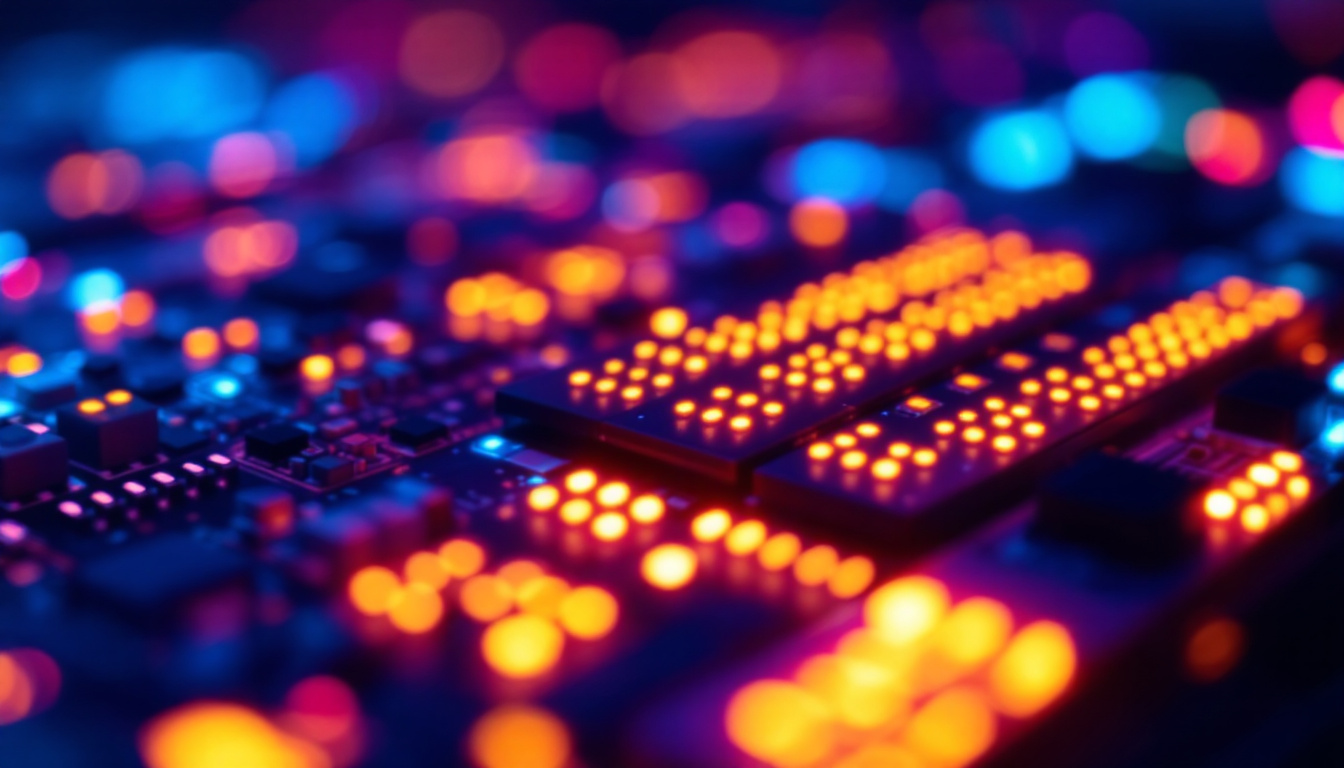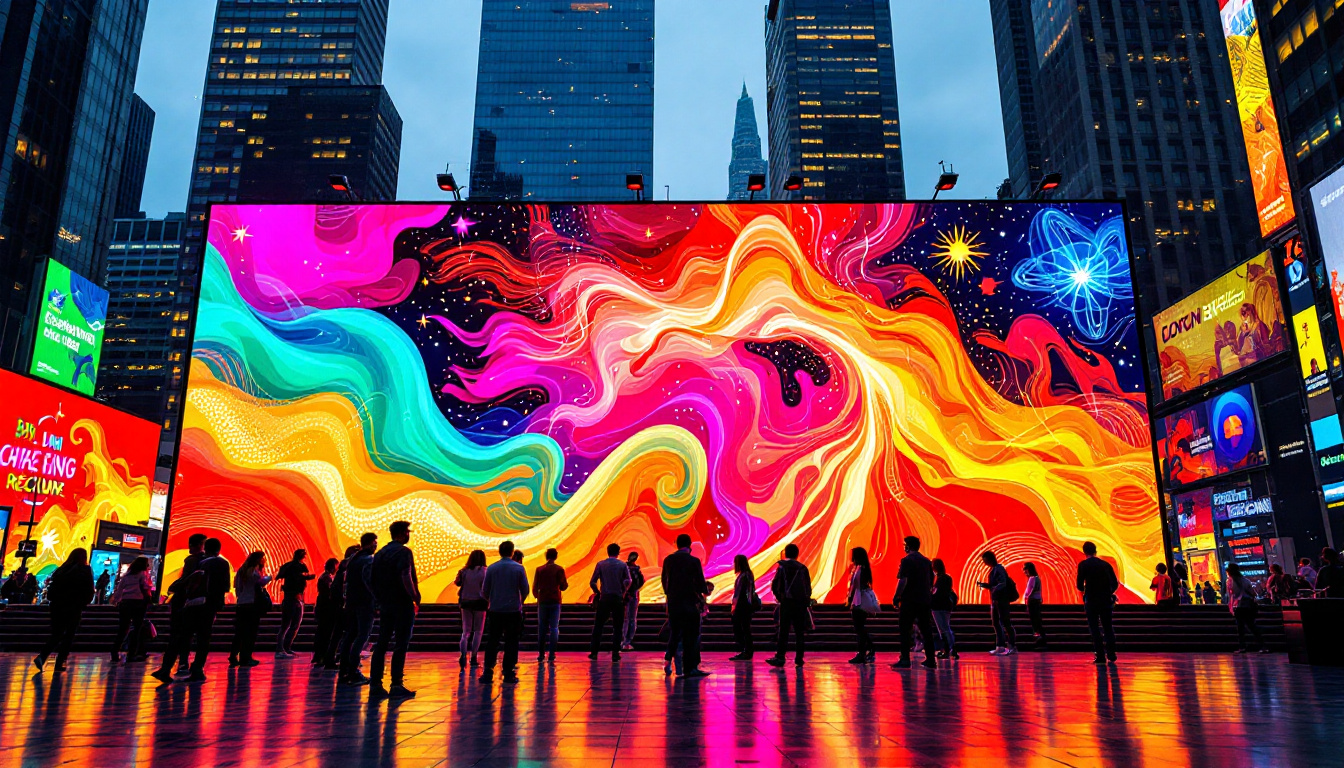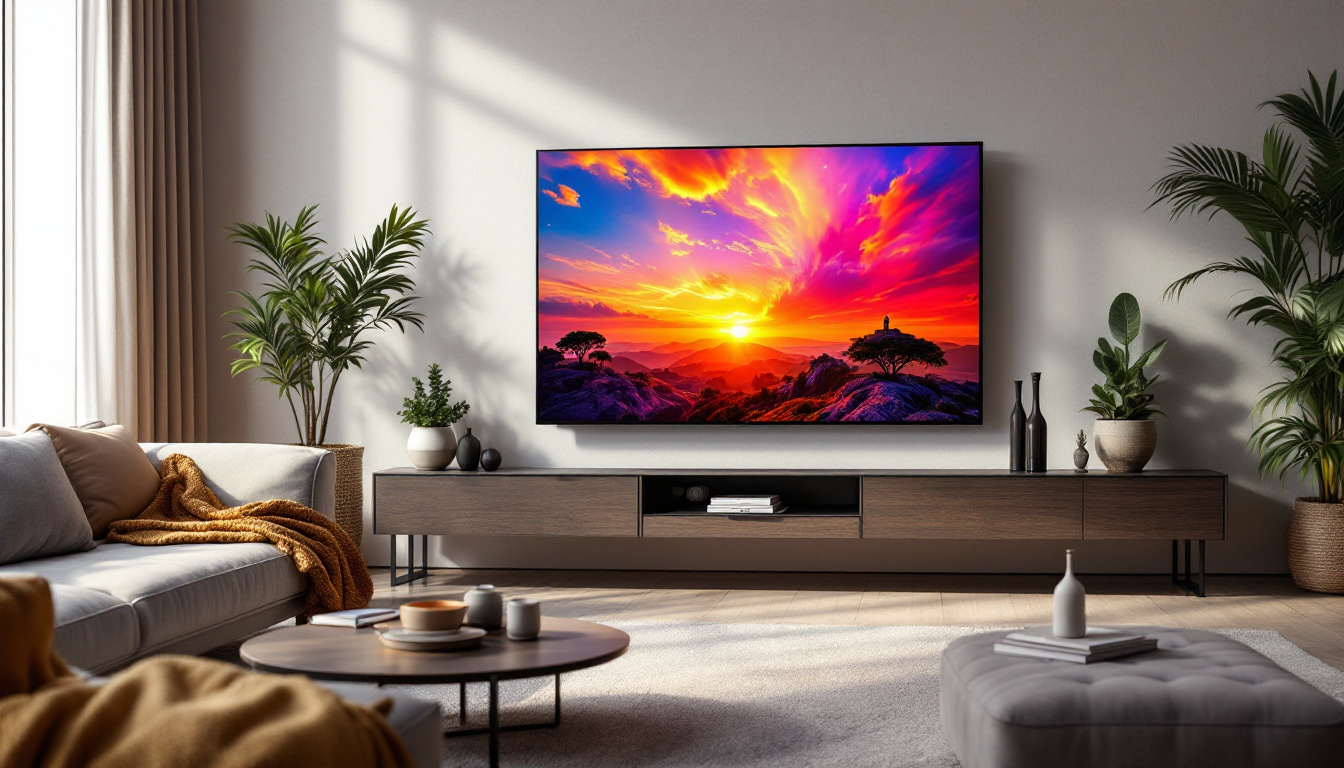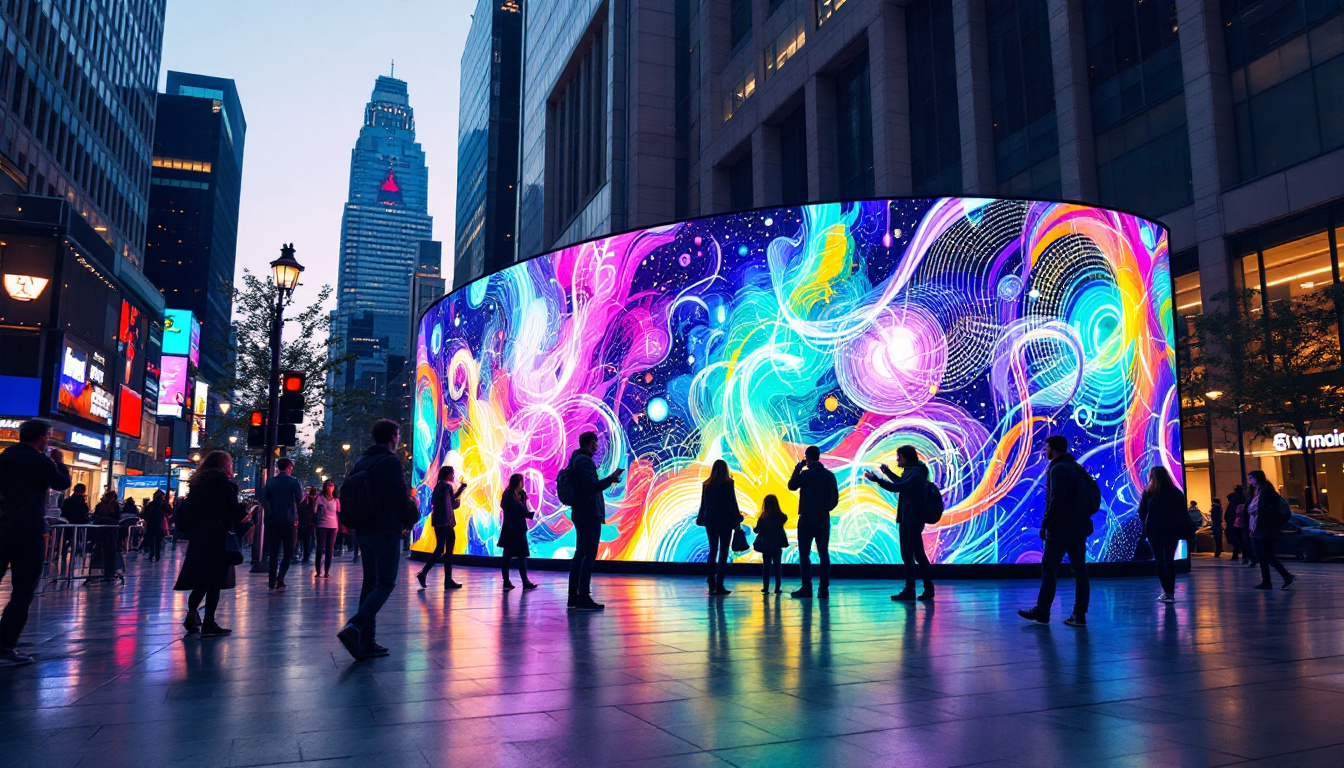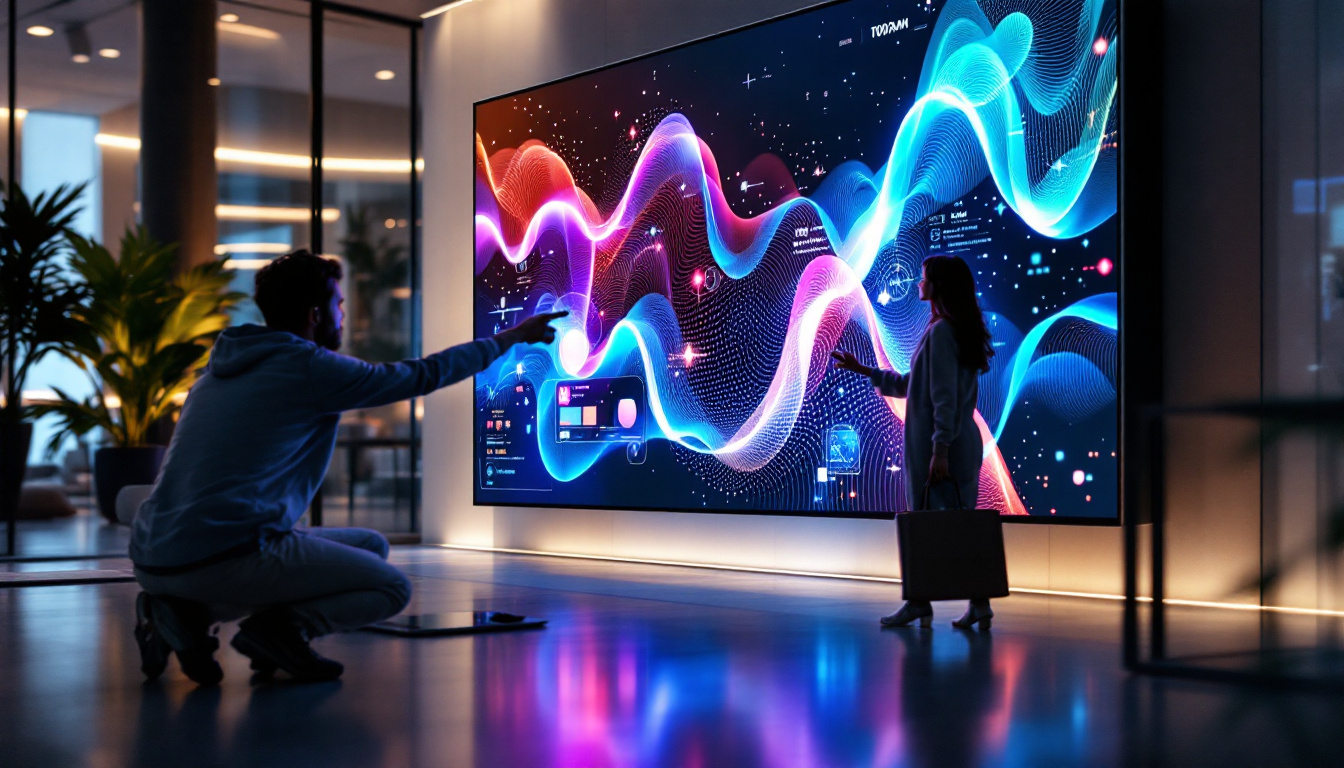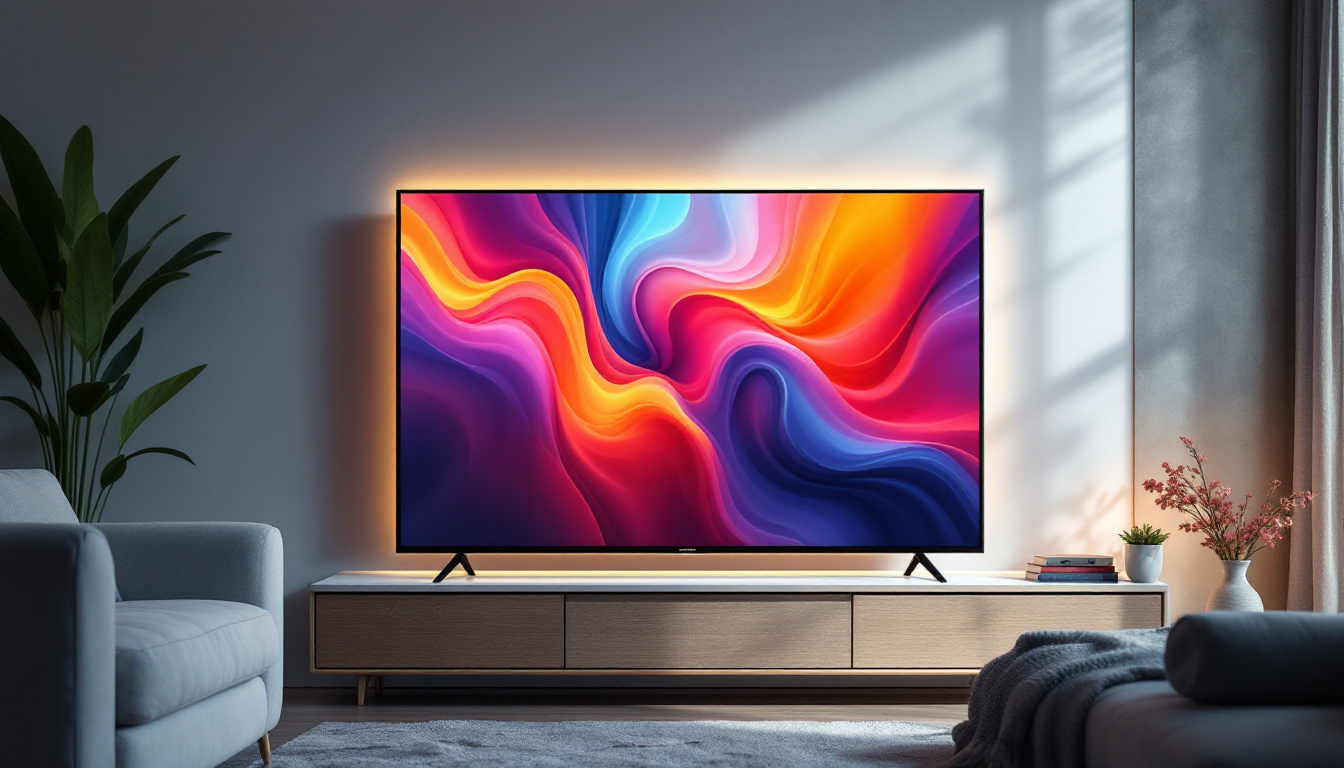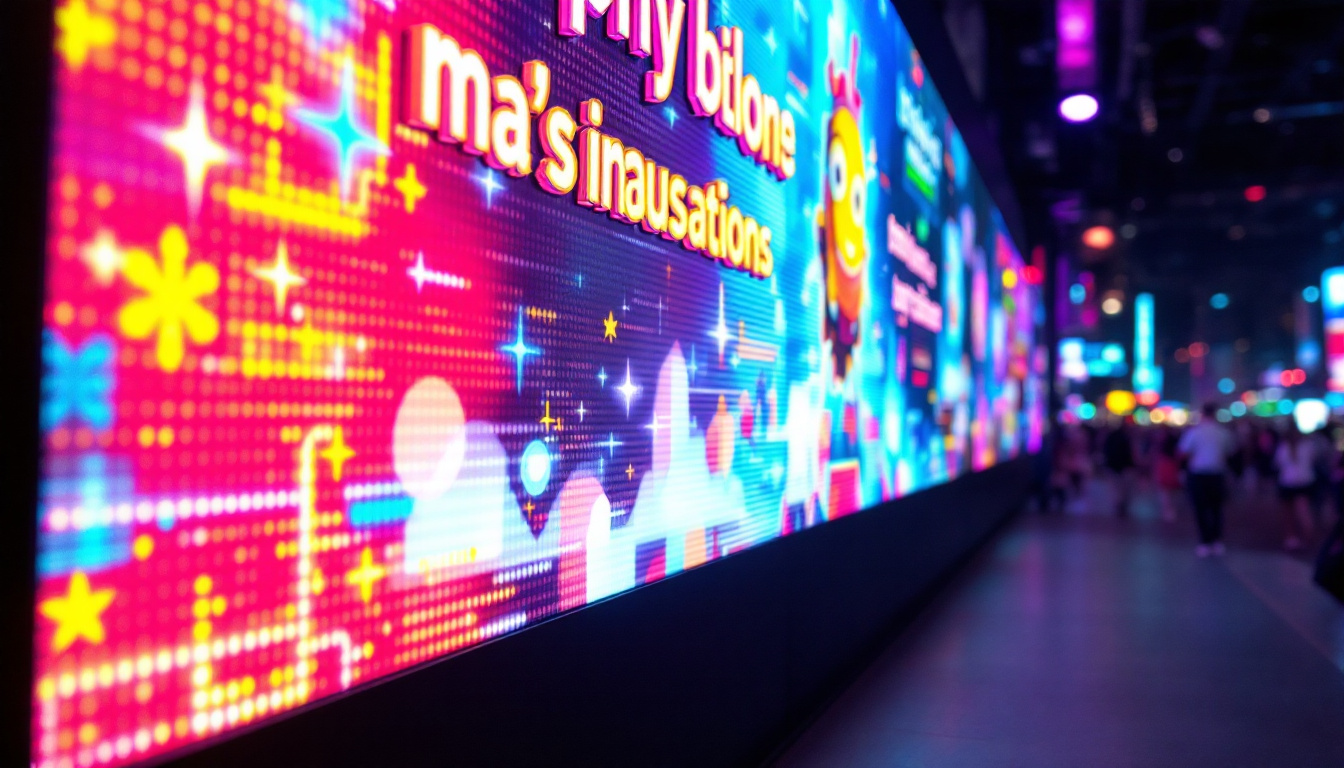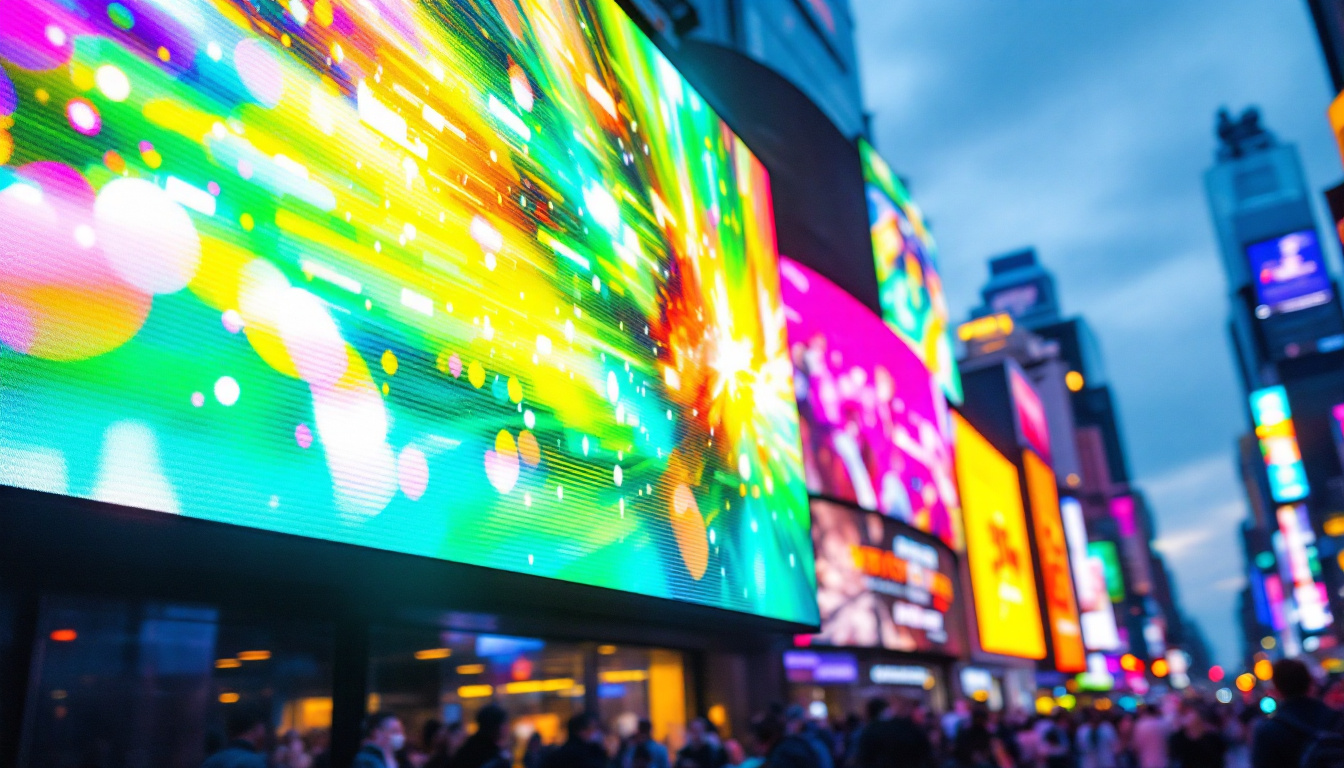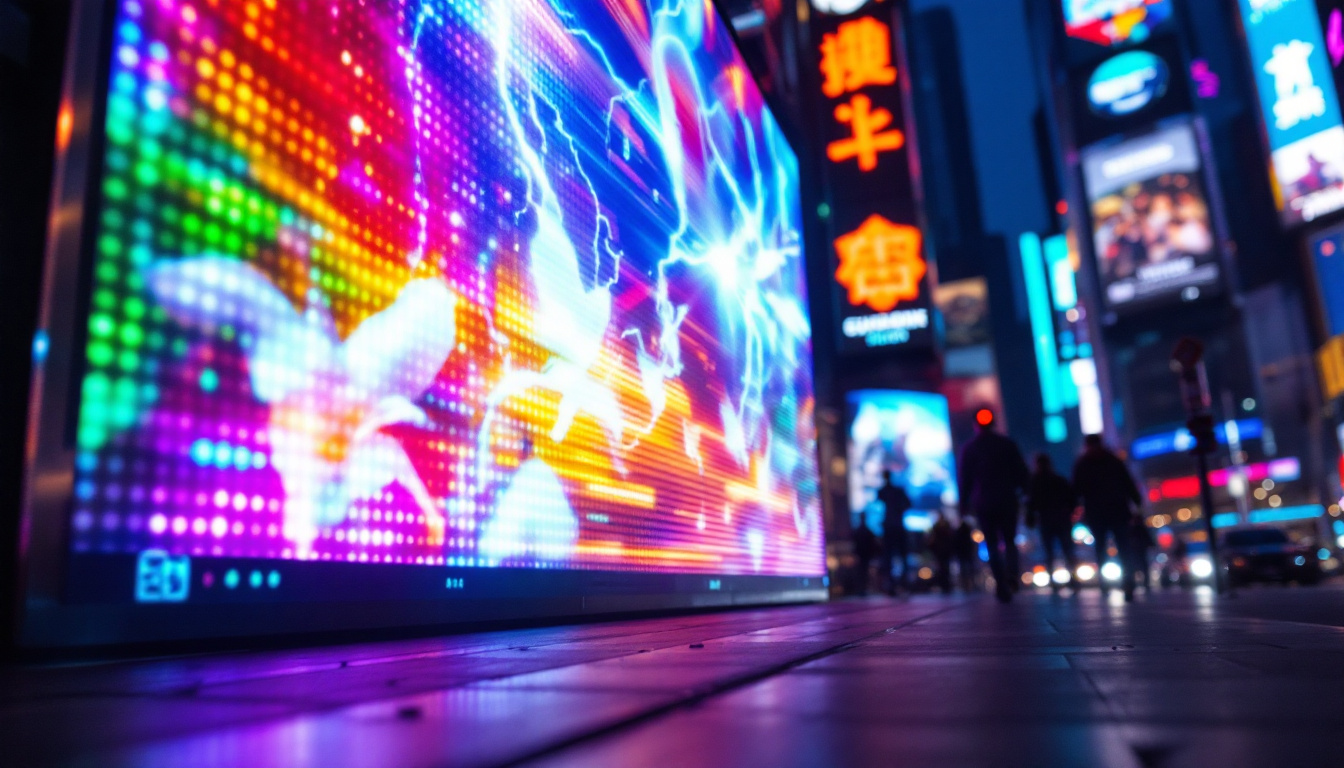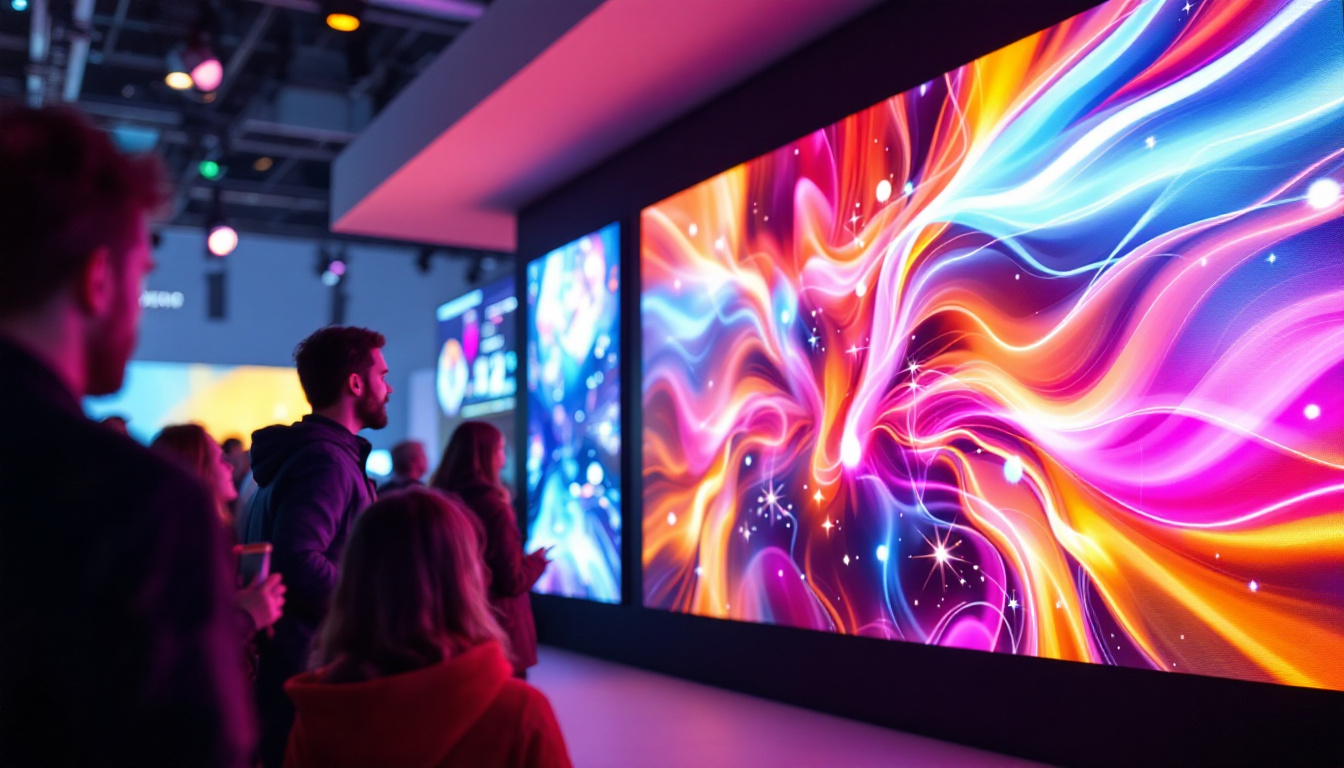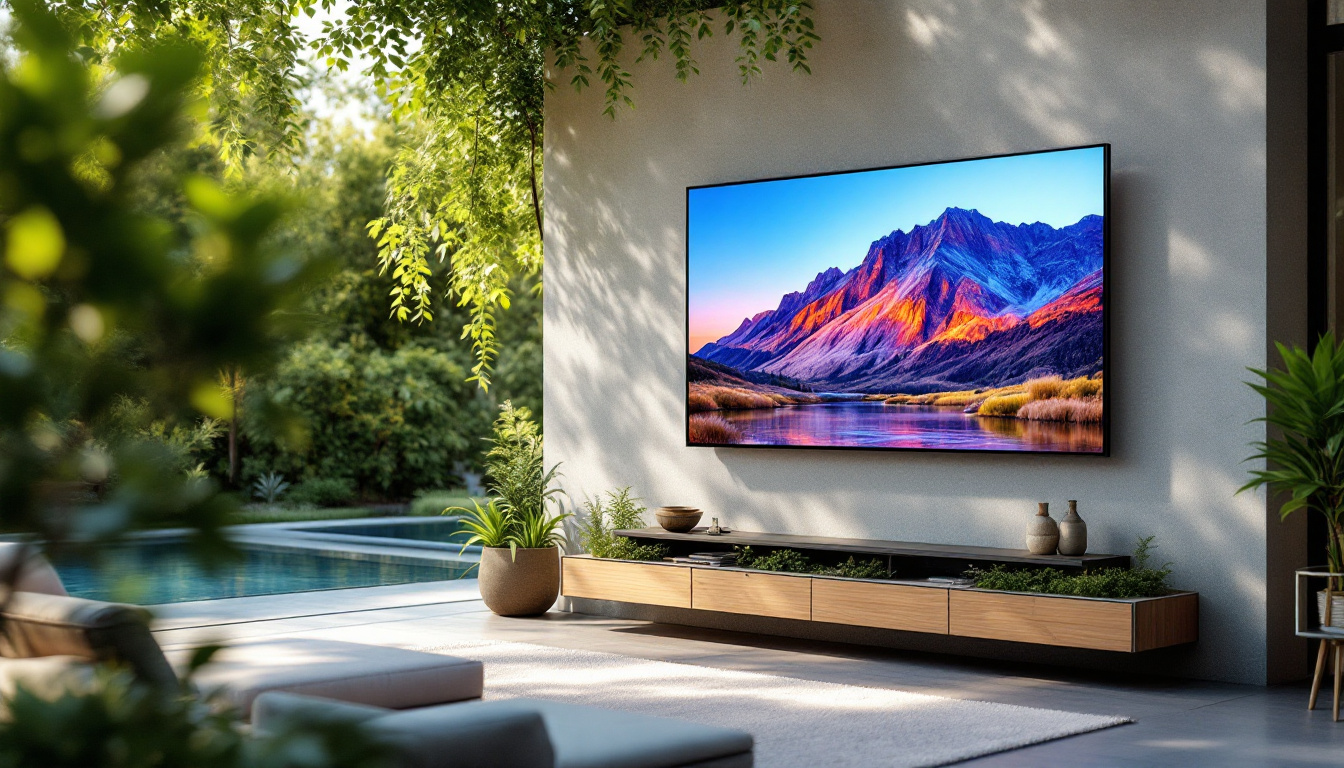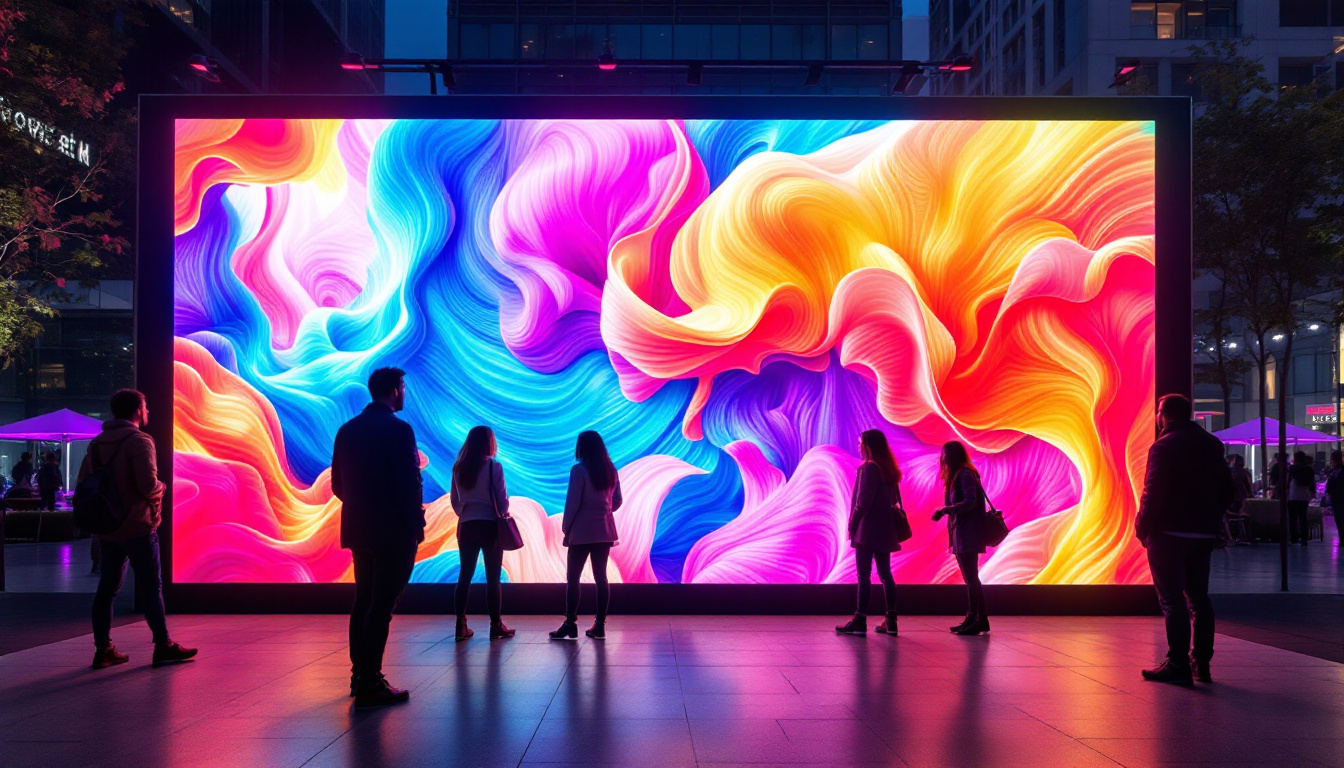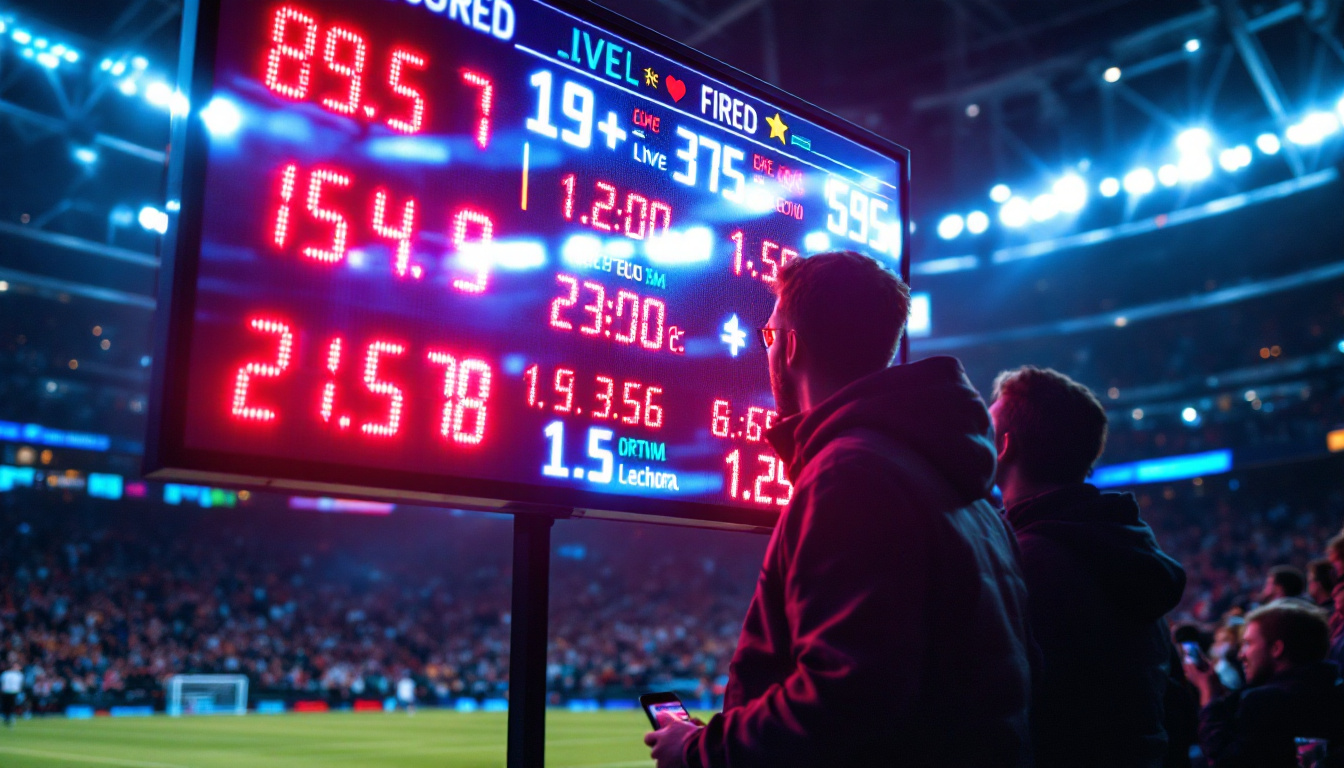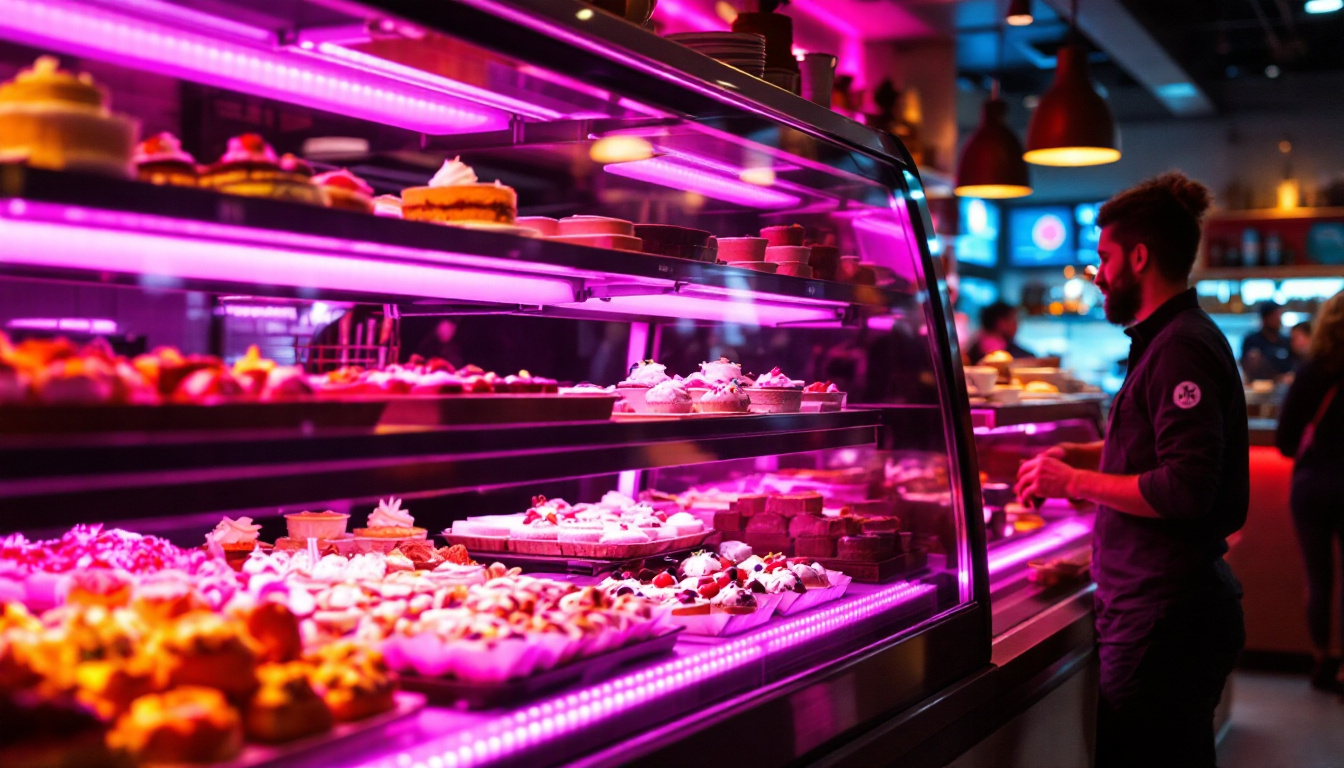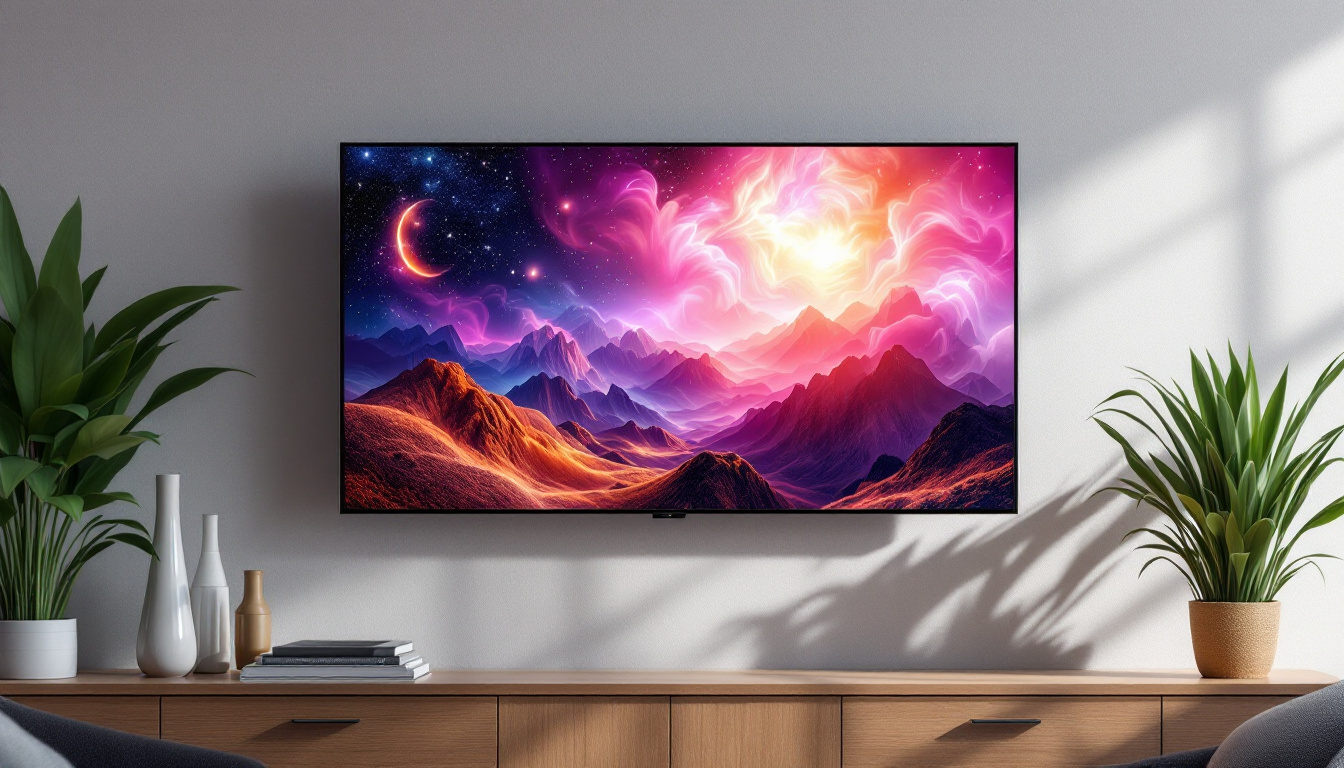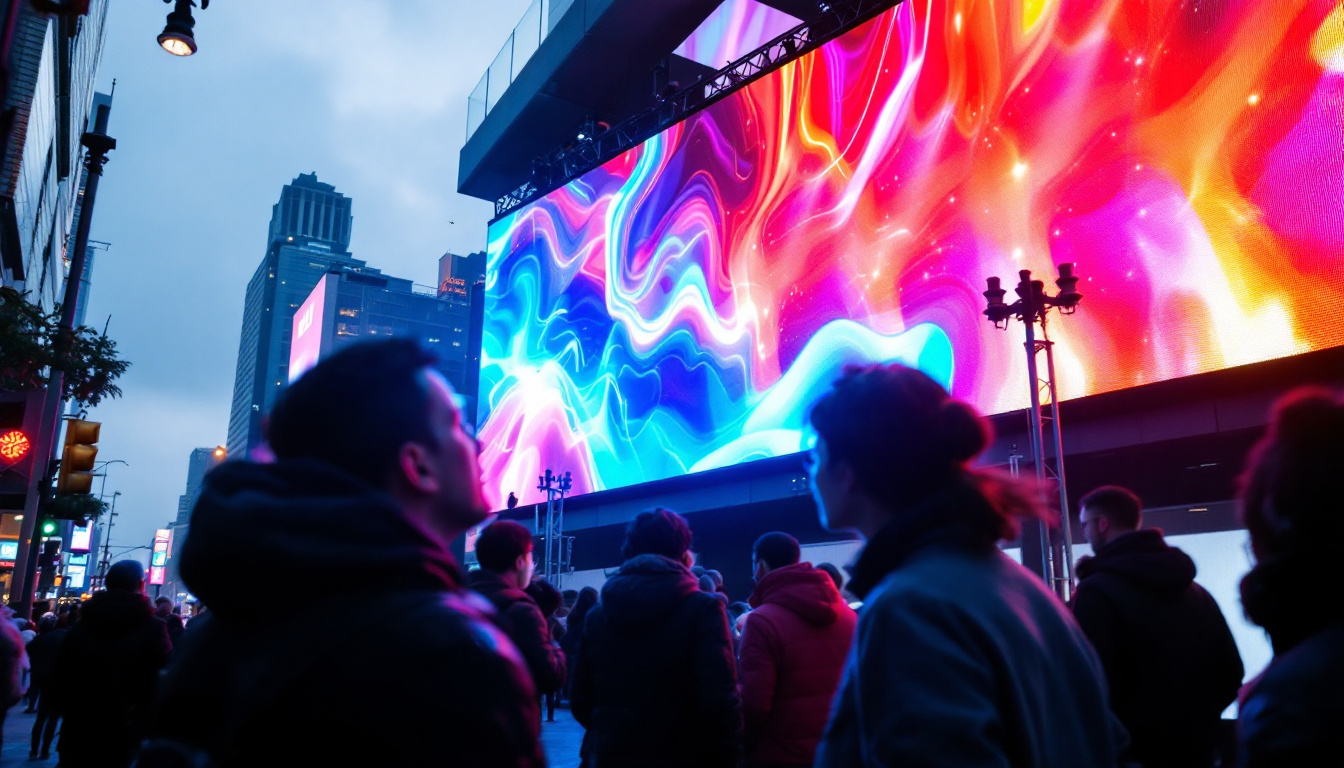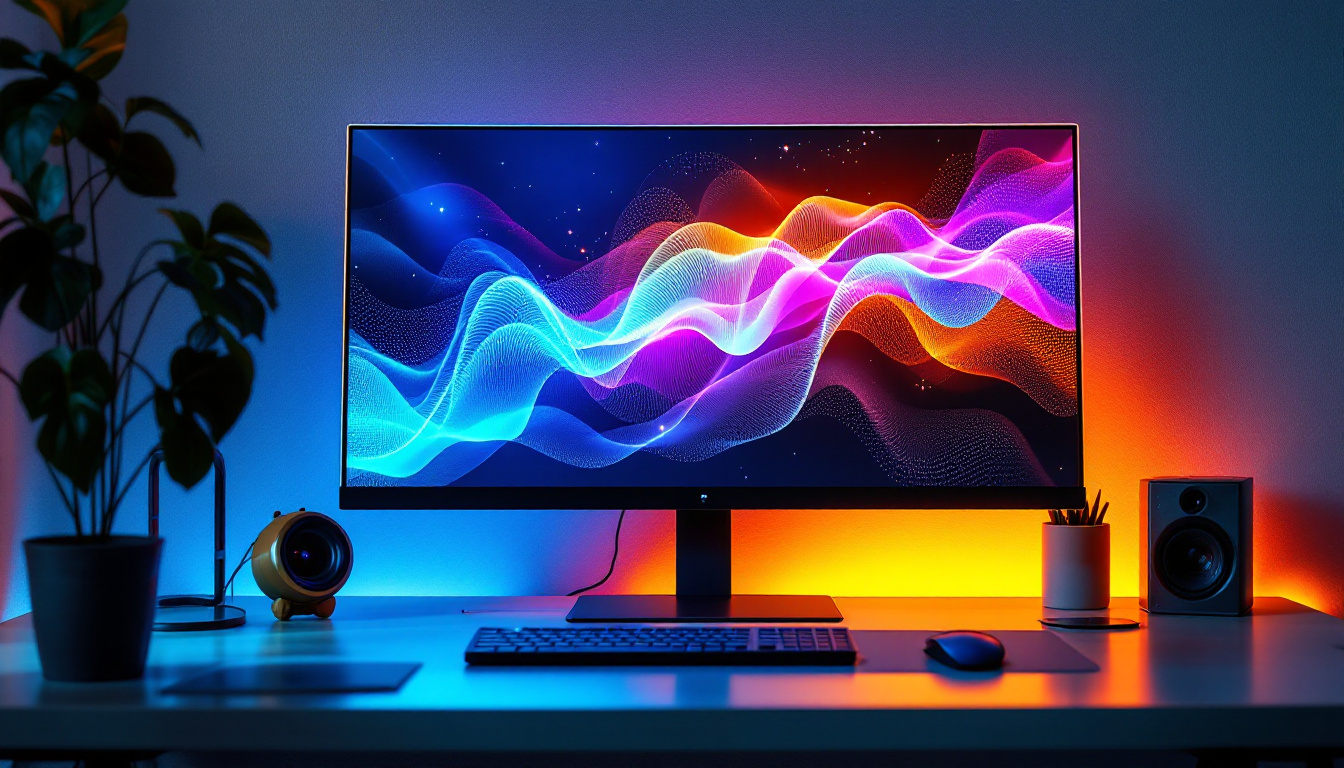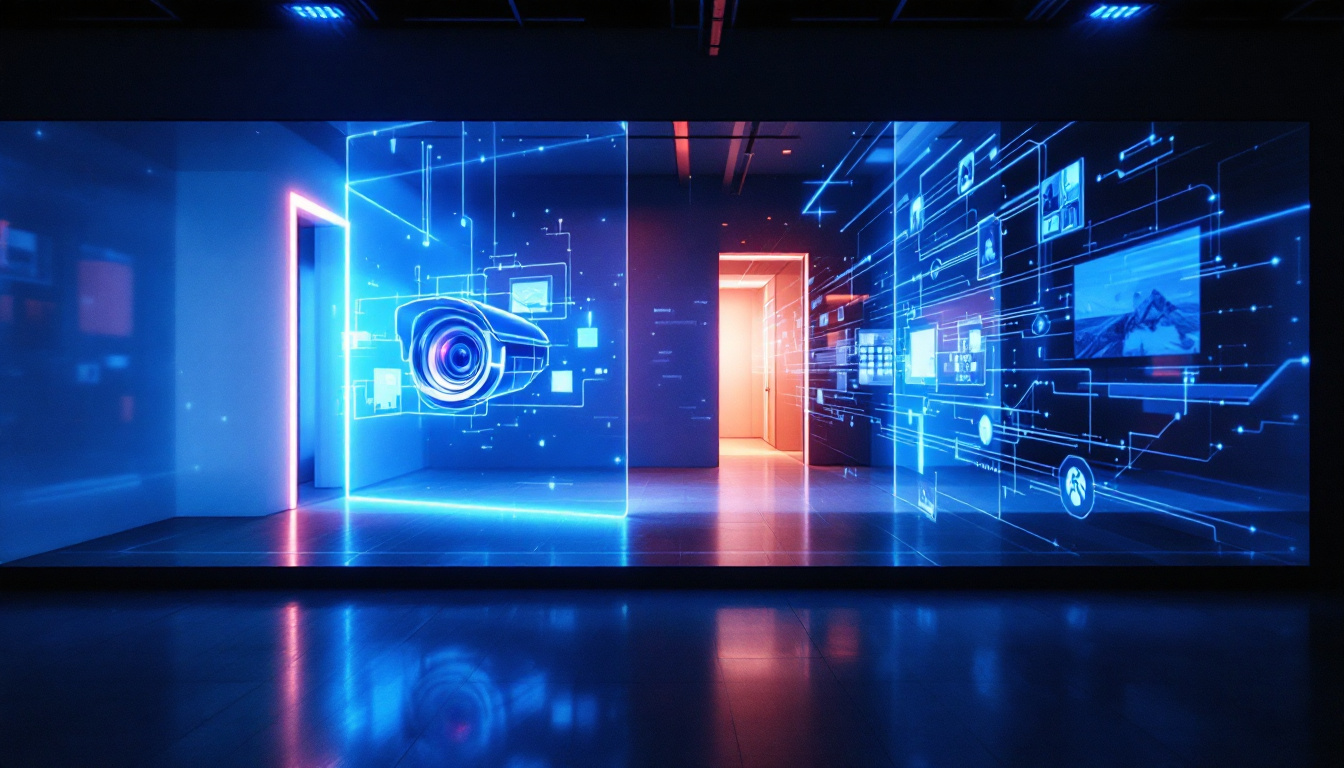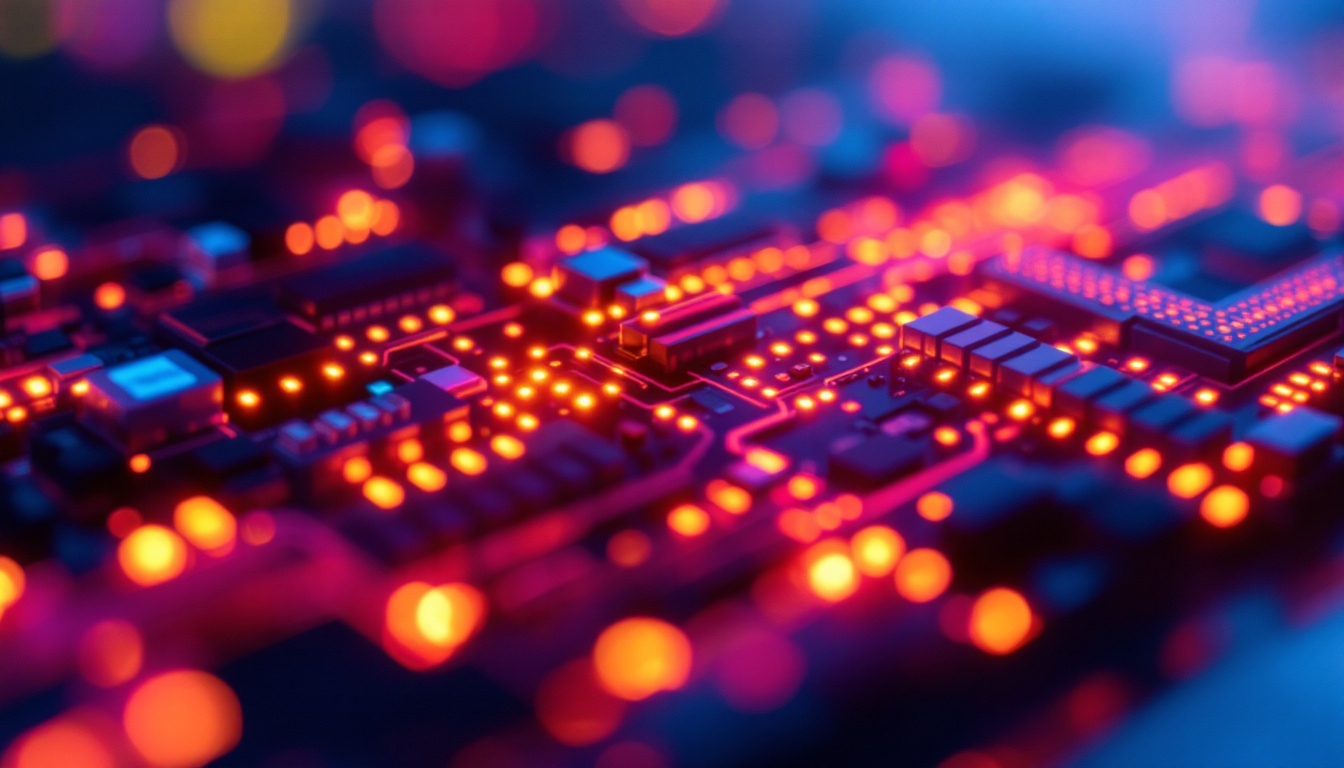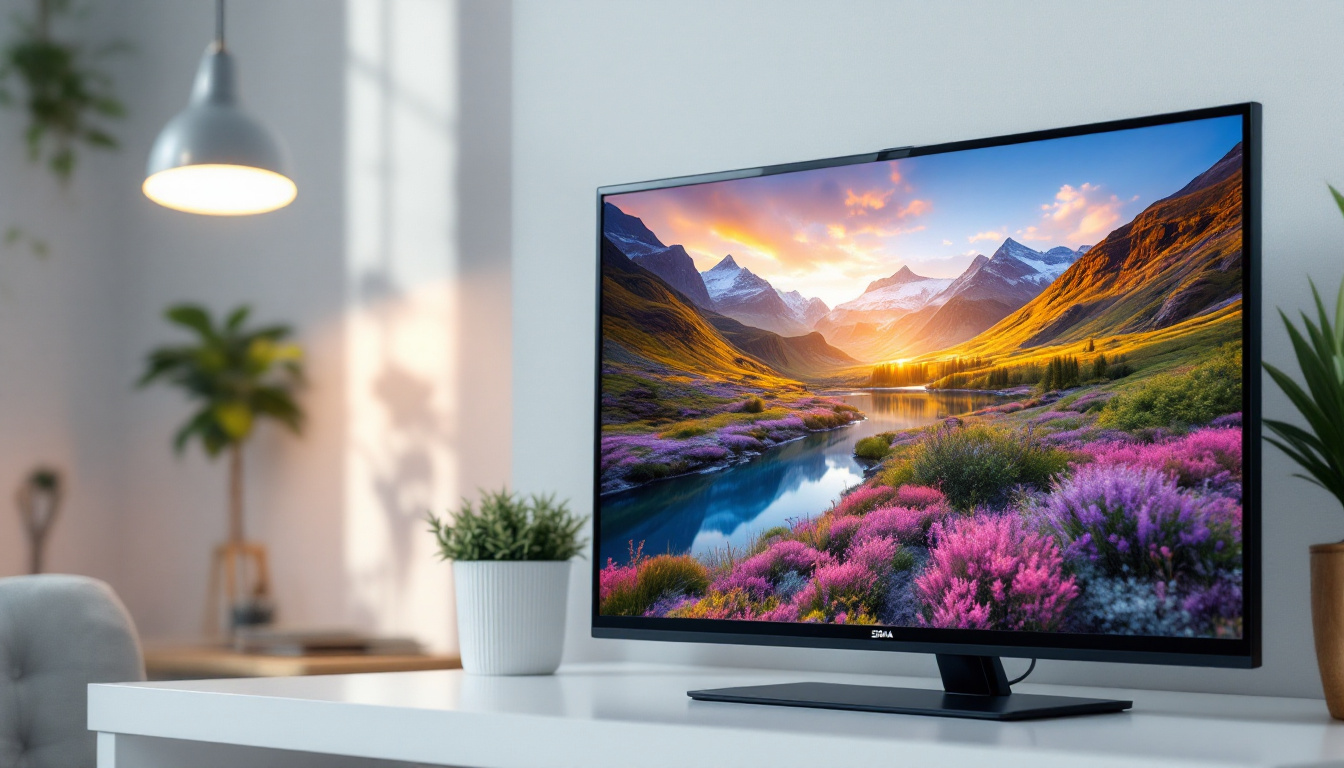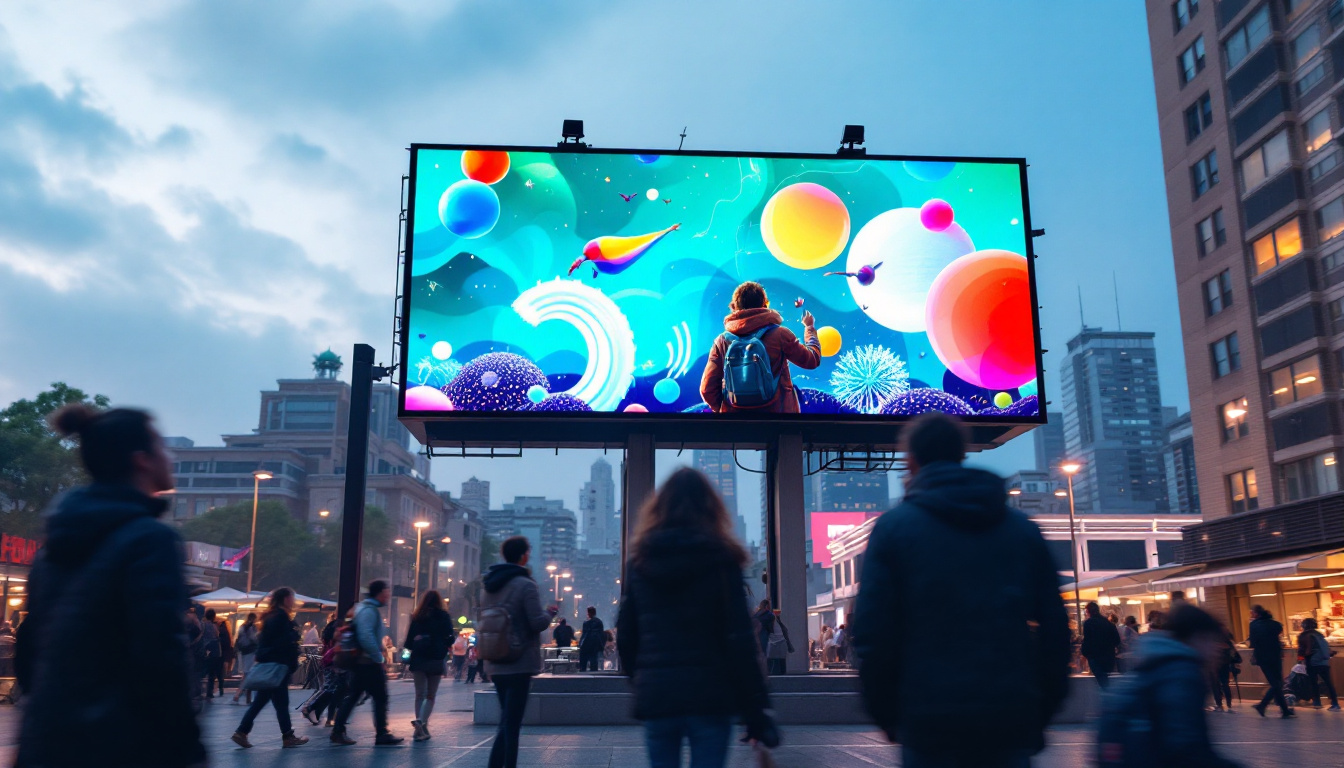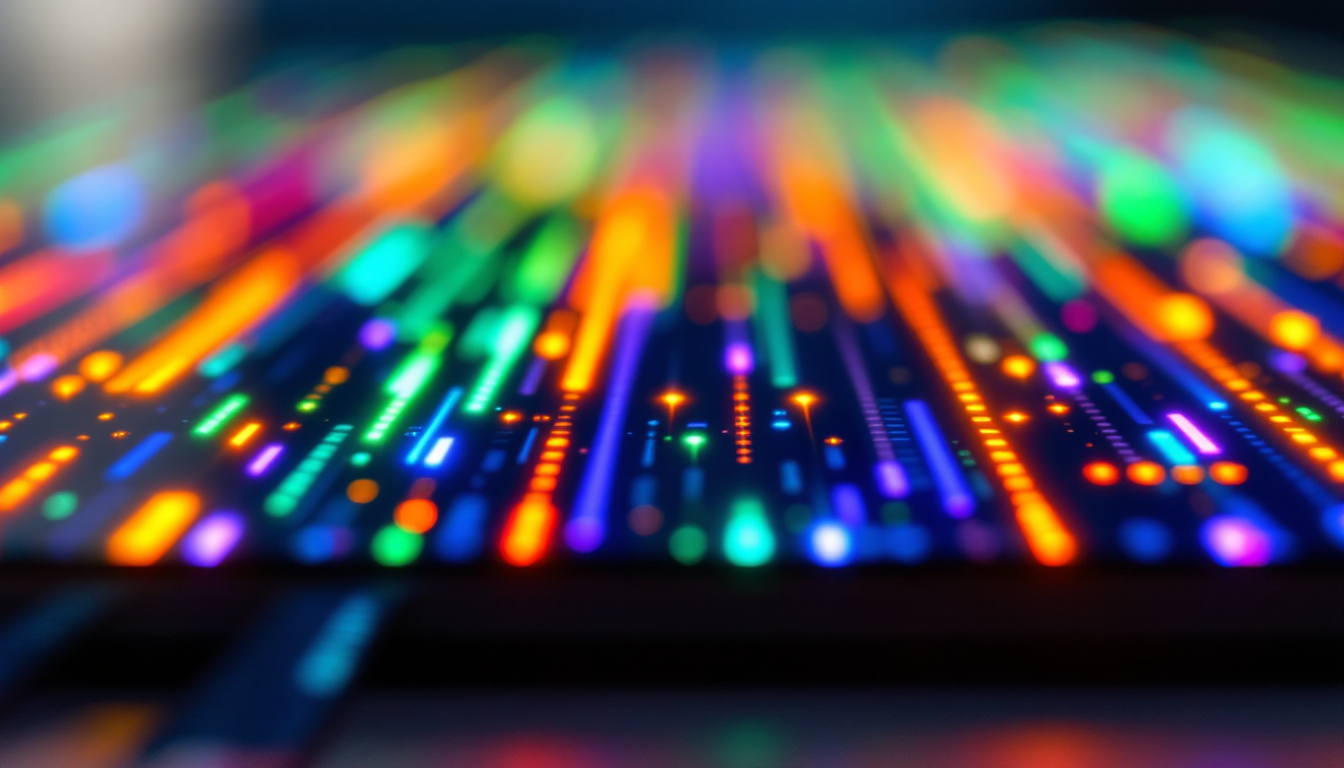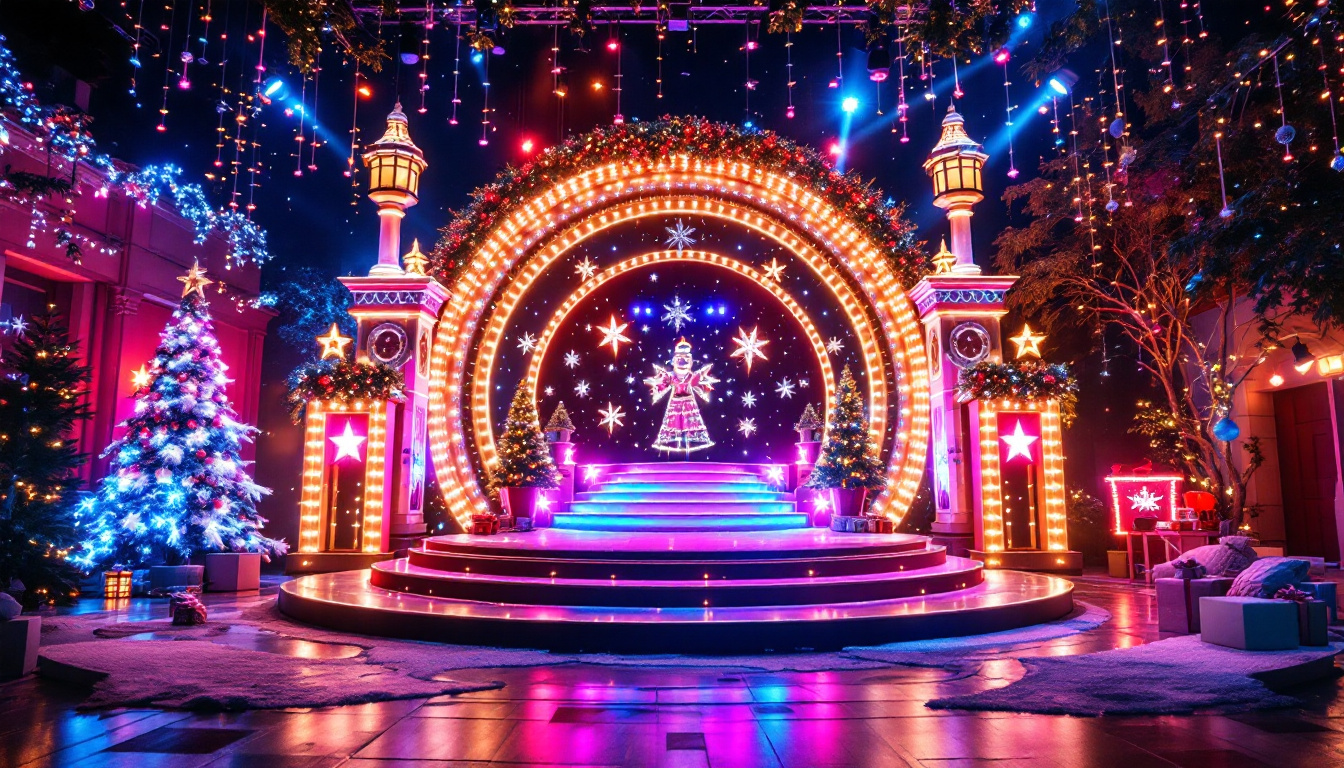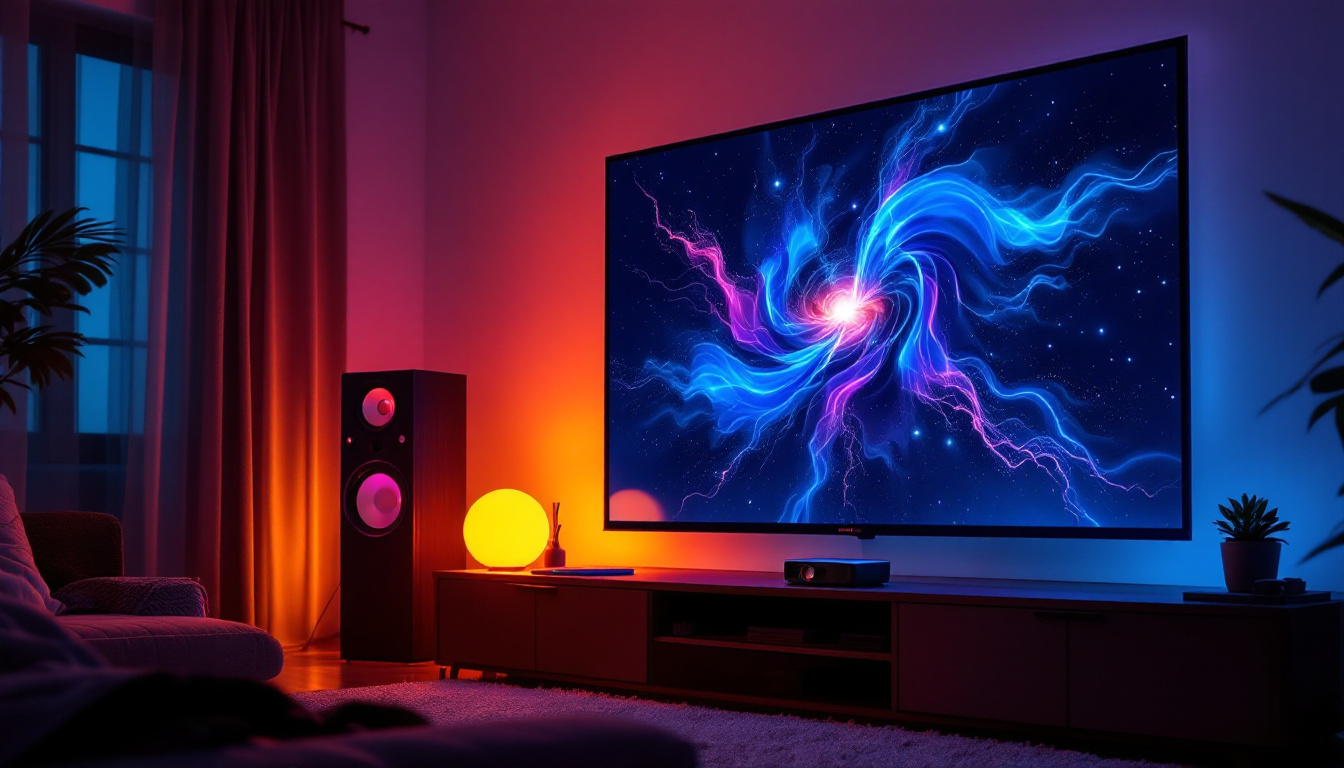In today’s digital age, the demand for high-quality visual displays has surged, particularly in commercial settings. LED display walls have emerged as a leading solution for businesses looking to captivate audiences with vibrant visuals. This article delves into the intricacies of LED display walls, exploring their technology, benefits, applications, and future trends.
Understanding LED Display Technology
LED, or Light Emitting Diode, technology has revolutionized the way visual content is presented. Unlike traditional display methods, LED displays utilize a matrix of tiny light-emitting diodes to create images and videos. This section breaks down the components and working principles of LED display technology.
Components of LED Displays
At the core of any LED display wall are several key components. The most significant include:
- LED Modules: These are the building blocks of an LED display wall, consisting of multiple LEDs arranged in a grid pattern. Each module can be independently controlled to produce various colors and brightness levels.
- Power Supply: LED displays require a robust power supply to ensure consistent brightness and color accuracy. The power supply converts AC voltage to the DC voltage needed for the LEDs.
- Controller: The controller manages the data input and ensures that the correct images and videos are displayed on the screen. It synchronizes the operation of all modules to create a seamless visual experience.
How LED Displays Work
The operation of an LED display wall is relatively straightforward. Each LED emits light when an electric current passes through it. By adjusting the intensity of the current, the display can produce a wide range of colors. This is typically achieved through a combination of red, green, and blue (RGB) LEDs, which can be mixed to create millions of color variations.
The controller plays a crucial role in this process, receiving input signals from various sources—such as computers, cameras, or media players—and translating them into visual output. The result is a dynamic display that can showcase anything from static images to high-definition videos.
One of the most impressive features of LED displays is their ability to maintain high brightness levels, making them suitable for both indoor and outdoor environments. Outdoor LED displays are often designed to withstand harsh weather conditions, featuring protective casings that guard against moisture and dust. This durability ensures that they remain functional and visually appealing in a variety of settings, from bustling city streets to large sporting events.
Furthermore, LED technology is known for its energy efficiency. Compared to traditional display technologies, such as LCD or plasma screens, LEDs consume significantly less power, which not only reduces operational costs but also contributes to a lower carbon footprint. This aspect of LED displays is particularly appealing for businesses and organizations looking to adopt sustainable practices while still delivering high-quality visual content.
Benefits of LED Display Walls
LED display walls offer numerous advantages over traditional display technologies. Their unique characteristics make them an ideal choice for various applications, from advertising to entertainment. Below are some of the key benefits of using LED display walls.
High Brightness and Visibility
One of the standout features of LED displays is their exceptional brightness. Unlike LCD or projection displays, LED walls can maintain visibility even in brightly lit environments. This makes them suitable for outdoor applications, such as billboards and event signage, where sunlight can easily wash out other types of displays. The vibrant colors and sharp images produced by LED technology ensure that messages are not only seen but also remembered, making them a powerful tool for marketers and event organizers alike.
Moreover, the ability to adjust brightness levels dynamically allows for optimal viewing experiences at any time of day. This adaptability is particularly useful for venues hosting events that transition from day to night, ensuring that the display remains effective regardless of changing lighting conditions. The flexibility in brightness also extends to indoor environments, where LED walls can enhance the ambiance of a space, drawing attention to key features or promotions.
Energy Efficiency
LED technology is known for its energy efficiency. LED displays consume significantly less power compared to traditional display technologies, which translates to lower operational costs. This is particularly beneficial for businesses that operate large display walls, as the savings on energy bills can be substantial over time. Additionally, the reduced energy consumption contributes to a smaller carbon footprint, making LED displays a more environmentally friendly option.
Furthermore, many LED displays come equipped with smart technology that allows for real-time monitoring of energy usage. This feature enables businesses to optimize their display settings and further reduce energy costs. By integrating LED walls into their operations, companies not only save money but also position themselves as environmentally conscious, appealing to a growing demographic of eco-aware consumers.
Longevity and Durability
LED displays are designed to last. With a typical lifespan of over 100,000 hours, they outlast many other display technologies. Additionally, they are more resistant to damage from impacts and environmental factors, making them an excellent choice for both indoor and outdoor use. This durability means that businesses can invest in LED technology with confidence, knowing that their displays will continue to perform reliably over time.
In addition to their impressive lifespan, LED displays are also built to withstand extreme weather conditions, including rain, snow, and high temperatures. This resilience makes them ideal for outdoor installations, such as sports arenas and concert venues, where they can endure the rigors of constant use and exposure. The robust construction of LED walls not only minimizes maintenance costs but also ensures that they remain visually stunning and operational, providing a consistent experience for audiences and customers alike.
Applications of LED Display Walls
The versatility of LED display walls allows them to be used in a wide range of applications. From corporate environments to entertainment venues, these displays serve various purposes. Here are some notable applications:
Advertising and Marketing
One of the most common uses for LED display walls is in advertising. Businesses leverage these displays to showcase promotional content, product launches, and brand messaging. The vibrant colors and dynamic content capture the attention of passersby, making LED walls an effective marketing tool.
Events and Entertainment
In the entertainment industry, LED display walls are a staple for concerts, festivals, and live events. They provide stunning backdrops and can display real-time content, enhancing the overall experience for attendees. The ability to create immersive environments with high-quality visuals is invaluable in this sector.
Corporate Communication
Many corporations utilize LED display walls for internal communication and presentations. These displays can be used in conference rooms, lobbies, and other common areas to convey important information, such as company news, performance metrics, and upcoming events. Their ability to display high-resolution content ensures that messages are clear and engaging.
Choosing the Right LED Display Wall
When considering an LED display wall, several factors must be taken into account to ensure the right choice for specific needs. Understanding these factors can help businesses make informed decisions.
Pixel Pitch
Pixel pitch refers to the distance between the centers of two adjacent pixels. A smaller pixel pitch results in higher resolution and better image quality, making it ideal for close viewing distances. Conversely, a larger pixel pitch may be suitable for applications where viewers are farther away. Assessing the intended viewing distance is crucial when selecting the appropriate pixel pitch.
Brightness Levels
Different applications require varying brightness levels. For outdoor displays, a brightness level of at least 5,000 nits is recommended to ensure visibility in direct sunlight. Indoor displays typically require less brightness, around 1,000 to 2,000 nits, depending on the ambient lighting conditions. Evaluating the environment where the display will be used is essential for optimal performance.
Installation and Maintenance
Installation and maintenance are critical considerations when selecting an LED display wall. Some displays are designed for easy installation and can be mounted on walls or suspended from ceilings. Additionally, understanding the maintenance requirements, such as cleaning and servicing, is vital for ensuring the longevity of the display. Businesses should consult with professionals to determine the best installation practices for their specific needs.
Future Trends in LED Display Technology
The landscape of LED display technology is continually evolving. As advancements are made, new trends are emerging that promise to enhance the capabilities and applications of LED display walls. Here are some notable trends to watch for in the future.
MicroLED Technology
MicroLED is a cutting-edge technology that promises to take LED displays to the next level. Unlike traditional LEDs, MicroLEDs are much smaller, allowing for higher pixel density and improved image quality. This technology is expected to enable even larger and more flexible display configurations, making it a game-changer for the industry.
Integration with Smart Technology
The integration of LED displays with smart technology is another trend gaining traction. As the Internet of Things (IoT) continues to expand, LED displays are becoming increasingly connected. This allows for real-time data integration, remote management, and enhanced interactivity, providing users with a more dynamic experience.
Increased Focus on Sustainability
As businesses become more environmentally conscious, the demand for sustainable display solutions is on the rise. Manufacturers are exploring ways to make LED displays more eco-friendly, such as using recyclable materials and reducing energy consumption. This trend aligns with global efforts to promote sustainability across various industries.
Conclusion
LED display walls have transformed the way visual content is presented across various sectors. Their high brightness, energy efficiency, and durability make them an attractive option for businesses looking to enhance their visual communication strategies. As technology continues to evolve, the future of LED displays promises even greater advancements, offering exciting possibilities for businesses and consumers alike.
Investing in an LED display wall can provide significant returns, whether for advertising, entertainment, or corporate communication. Understanding the technology, benefits, applications, and future trends will empower businesses to make informed decisions and leverage the full potential of LED display solutions.
Discover LumenMatrix LED Display Solutions
Ready to elevate your visual communication with the latest in LED display technology? LumenMatrix is at the forefront of creating immersive and dynamic visual experiences. From Indoor and Outdoor LED Wall Displays to specialized solutions like Vehicle LED Displays and LED Sports Displays, our extensive range caters to every need. Embrace the future with our innovative LED Transparent Displays and All-in-One LED solutions designed to captivate and engage your audience. Visit LumenMatrix LED Display Solutions to discover how our cutting-edge products can transform your space and convey your message with unparalleled impact.

